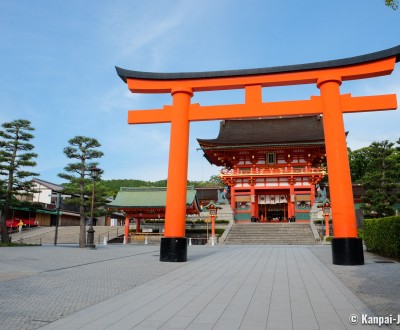Kyoto and Nara without Tourist amid Coronavirus Outbreak
The Strange Spring 2020 Tour of Japan’s Empty Touristic Sites
Covid-19 is at the core of a global health crisis and the cause of thousands of deaths in the world, but it also terribly impacted the tourism industry in Japan. From the end of March 2020, Japan closed its borders and almost no traveler from overseas was allowed in the country. This situation is expected to last at least until summer 2020.
All Japanese prefectures have lifted the state of emergency by late May, so we decided to have a look on Kyoto and Nara without tourists, and especially the places that used to be the most crowded. We choose the two ancient capitals of Japan over Tokyo as they gather almost exclusively tourism-oriented attractions on a limited area and they became mass tourism destinations in the recent years. We found an astounding, if not frightening, contrast with the pre-pandemic situation in most of the places we visited.
The pictures below were taken in early June 2020, on weekdays.
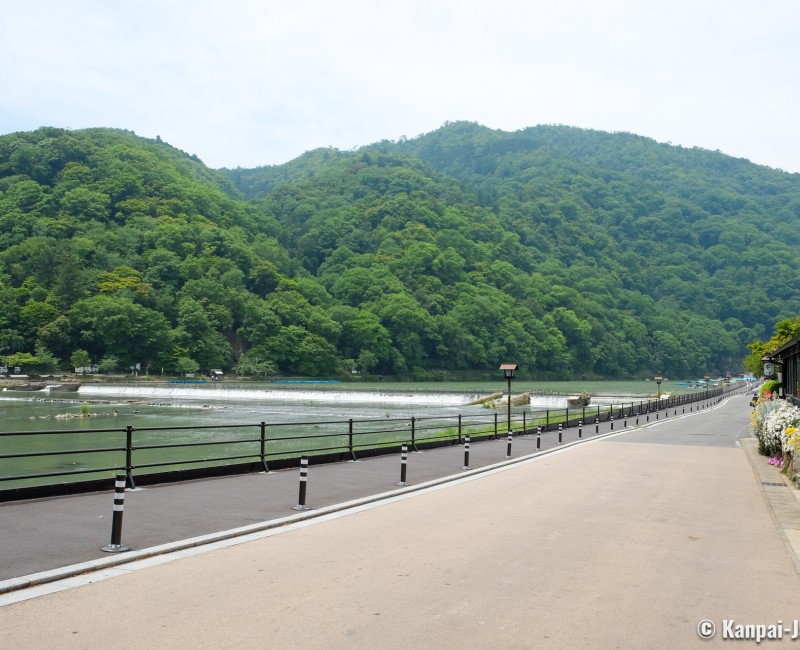
Arashiyama and its bamboo grove
We arrived in Arashiyama before 10 a.m., by a Hankyu train 🚅, and we got off at the terminus with only five other passengers, as salary-men already stopped at the previous stations. The train platform and the station were empty from travelers, and taxis and jinrikisha (rickshaw) were waiting for clients in vain.
Streets were deserted and bicycle rental shops closed. Some stores owned by large-size retailers were open, but independent shops were closed, as well as restaurants. For the latter, we supposed their opening times might have shifted to week-ends only. On Togetsukyo brigde, there was at most 15 persons walking at the same time.
The usually so lively Arashiyama bamboo grove, was overwhelmed with silence, only occasionally troubled by birds chirping. A few people practiced running or bicycle in the bamboo grove. When was the last time they could do it here? On the way, we mainly met Japanese people and a couple of foreign expatriates.
At Tenryu-ji temple, an employee explained that the touristic frequentation depended essentially from the weather conditions. However, it was a really nice weather day when we visited. As we chatted a little bit longer, we learnt that there were a little bit more visitors on Saturdays and Sundays, especially Japanese people who took the opportunity of the tourists’ disappearance to enjoy a quiet visit.
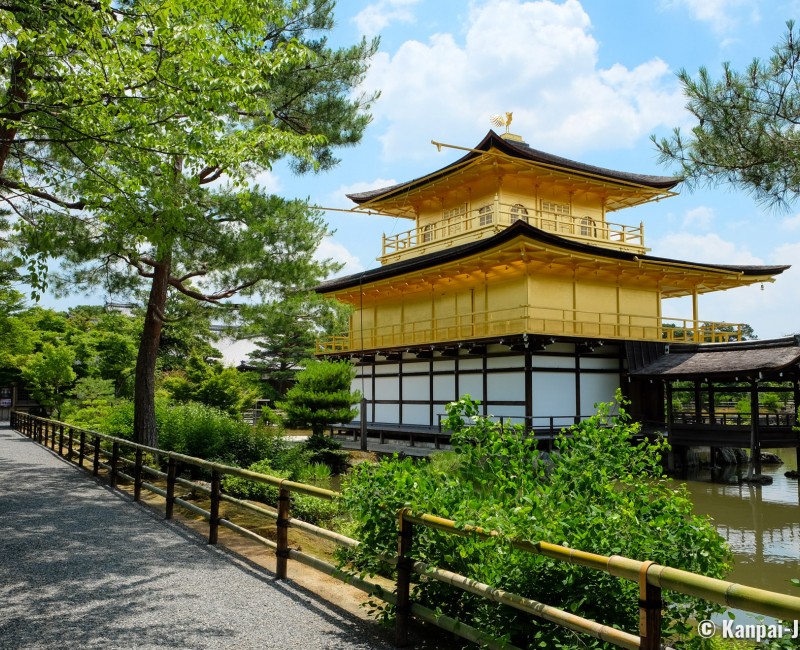
Kinkaku-ji
We arrived at Kinkaku-ji temple before noon. Some of the bus stops serving the temples area were closed, especially on bus lines n°59 and 12: those are indeed mainly used by tourists. In Kinkaku-ji grounds, however, except for the spot to throw coins covered by a green tarpaulin, very few anti-Covid-19 measures were enforced.
Except for a boutique selling post-cards, all the shops in the surroundings of the temple were closed. Security guards were at their posts but not overwhelmed. Beyond the admission booths, the main alley unfolded, without a soul to be seen. The temple’s grounds were immersed in an incredible quietness, with birds chirping and the sound of the waterfall audible from unusual distances. The few Japanese visitors spoke in a low voice. We took the time to enjoy a matcha tea, listening to the sound of the gardens’ little stream from the tea house.
We spent there about 1 hour, and we met only 15 persons, of which the only foreigners were a small expatriate Pakistani family.
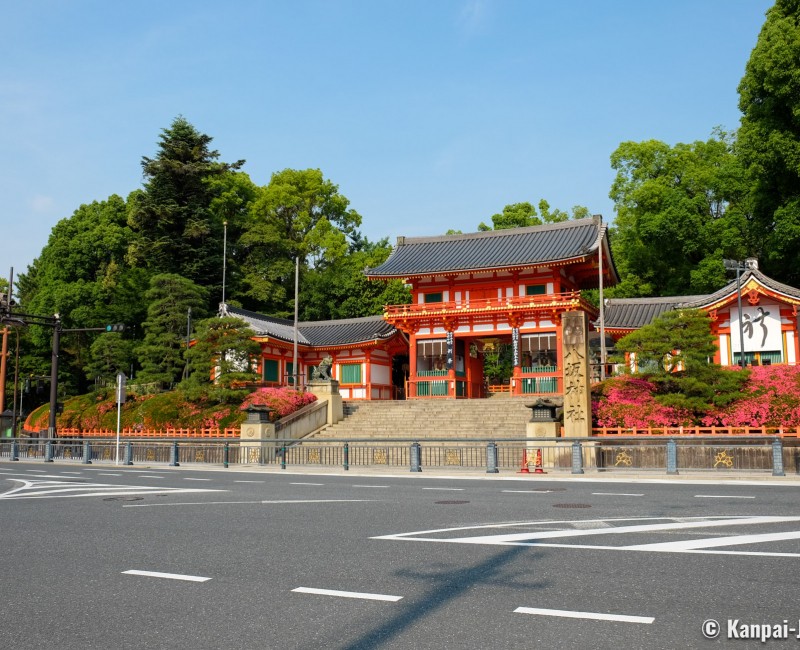
Downtown Kyoto: Shijo-Kawaramachi, Gion and the surroundings
The heart of the ancient capital does not totally depend on tourism. As people live in Shijo-Kawaramachi, the area was a little bit busier around mid-day.
However, Kamogawa river banks were totally empty as well as Yasaka shrine. People may also have been discouraged by the sun at its zenith and the increasing heat.
There were not much people in Gion as well, even if renovation works were continuing here and there. A lot of shops were closed, except a café selling warabi-mochi, a popular confectionary, in front of which about 10 persons were waiting in line. Cars 🚙 and motor scooters were speeding up on the road. When we came back at the end of the afternoon, there were even less people.
Pontocho, was totally empty.
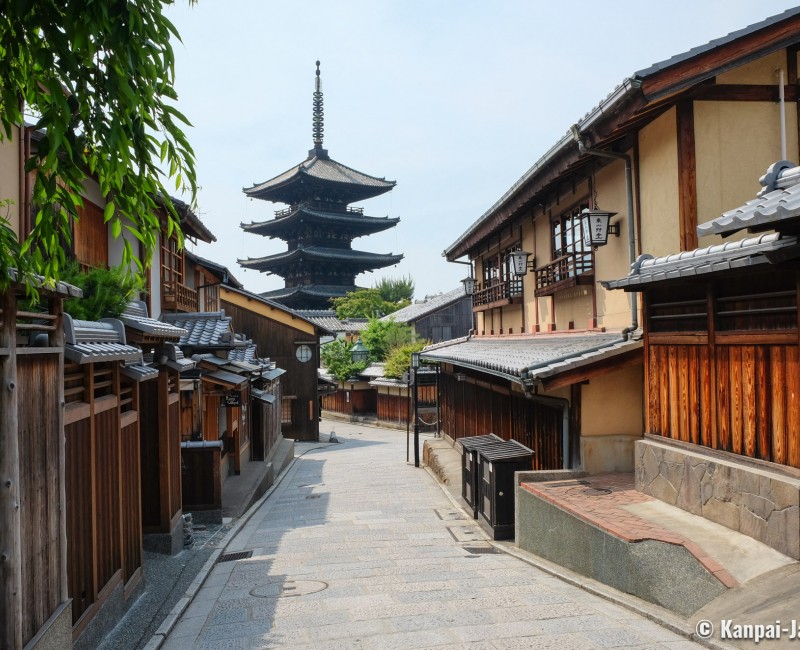
Ni/Sannenzaka and Kiyomizu-dera
Then, we headed to Higashiyama, in eastern Kyoto. Almost all the shops were closed in Ninenzaka: this pedestrian street usually overwhelmed by tourists was totally empty. A jinrikisha waiting for customers was yawning in boredom. In the new (but not open) Park Hyatt hotel 🏨’s street, we met about 5 lonely stragglers.
Sannenzaka was a little bit livelier, but half of the shops were closed. As in Arashiyama, only the biggest stores have open, and the staff did not seem very busy.
Arriving at Kiyomizu-dera, we found only 3 persons taking pictures in front of the entrance. The plaza was totally empty, and there was no one to line before the entrance (!). We visited the temple alone, listening to the sounds of nature and chirpings. We took a 5 minutes’ rest, during which we didn’t see a soul.
We spent about one hour there and we crossed paths with less than 30 persons.
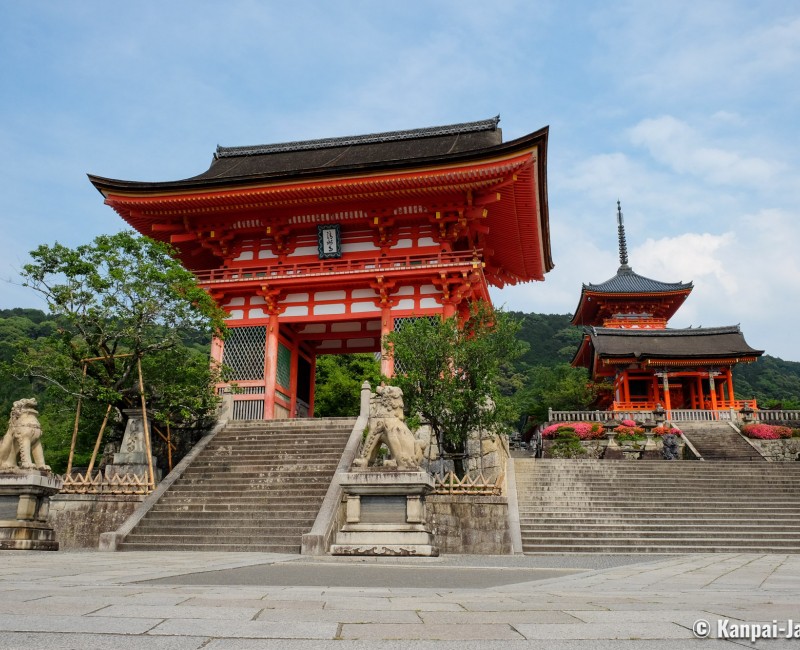
Fushimi Inari Taisha
Around 4 p. m. we arrived at one of the most prominent touristic attraction in Kyoto: Fushimi Inari Shrine. Not a soul to be seen near the torii ⛩️ corridor area.
It was the same as we hiked Inariyama to admire sunset. At the top of the mountain, we found out that the benches were removed, maybe as a physical distancing measure.
As in Kiyomizu, we spent about 1h30 on the premises and met about twenty persons at most, among which was only one group of 8 Japanese visitors. The other were Chinese expatriates and Kyoto’s inhabitants who came to pray at the shrine.
It seems we could have met more people hiking in the mountains than in Fushimi Inari Taisha in early June 2020.
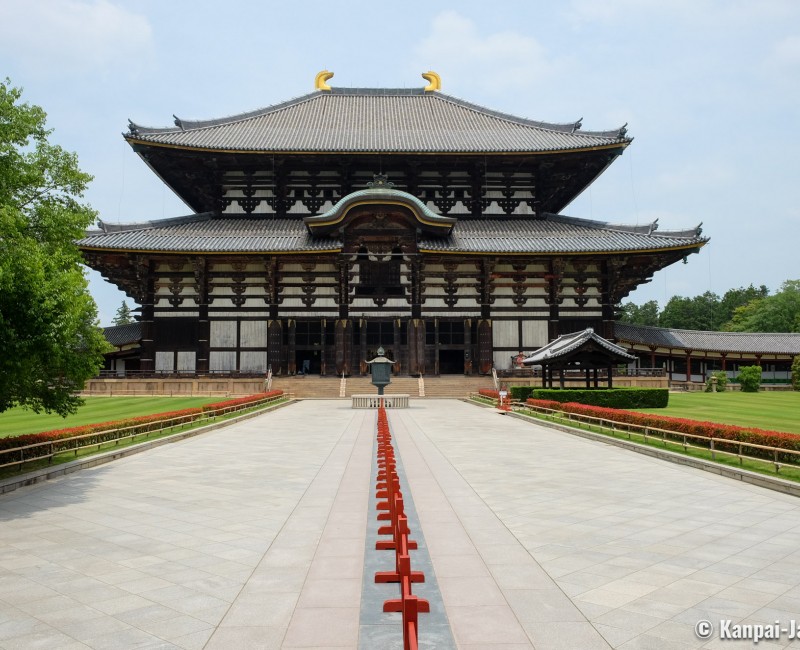
Nara
We spent another day in Nara, where we arrived in mid-morning at Kintetsu station in downtown Nara.
There were a handful of people in the shotengai (covered shopping arcade), but only locals. All touristic shops, even the larger ones, were closed. The mochi shop that usually hold mochi-making performances took this opportunity to renew its window. In the main street leading to JR station, about 1 shop out of 20 were open, and even the tourist information center was closed. No jinrikisha was in sight.
When we arrived at Kofuku-ji in the morning, the place was almost empty. Buildings were closed, including the one that was refurbished two years ago. In the temple’s grounds, we haven’t met more than 5 persons.
In Nara Park, we only met a family on picnic and three senbei (rice crackers) sellers for shika deers. The deers were not as numerous as usual, and most of them were sleeping or laying down in the paths. One of the senbei sellers explained that some deers ventured in town and even broke into people’s houses to find food. Their new diet seems to have an influence on their droppings, which happen to be harder than usual!
We arrived in Todai-ji, the city’s main attraction, around noon. The situation was even worse than in Kyoto: except for one, all the shops on the path to the temple were closed. There was no one in the temple’s grounds and the atmosphere was somewhat weird and freaky. Todai-ji was open, but with anti-Covid safety restrictions:
- Compulsory mask-wearing in the area;
- Access to ticket booths limited to two corridors, and only one in two booths open;
- Temple’s grounds divided in two distinct walking paths, with specific directions, enclosed by red barriers as in the picture below;
- Buddha’s nostril (hashirakuguri) closed;
- The access to pindora, a Buddhist statue providing healing effects when rubbed, also closed;
- Monks are continuously praying to ward off the effects of the pandemic in Japan.
We went for lunch at our usual eatery, but only two tables were set up, and we were the only customers.
On the way to Kasuga Taisha, we walked without meeting anyone for 10 minutes. In the shrine’s grounds, we haven’t seen groups of more than 5 persons.
The National Museum was naturally closed. We gave up going to Nigatsudo and Naramachi, as they were never so popular with tourists to begin with.
Our impression of Nara was the same as of Kyoto, and it might be even worse for Nara whose dependence to tourism industry is even greater than Kyoto’s. On the couple of hours we spent there, as for foreign visitors, we only met two Chinese girls.
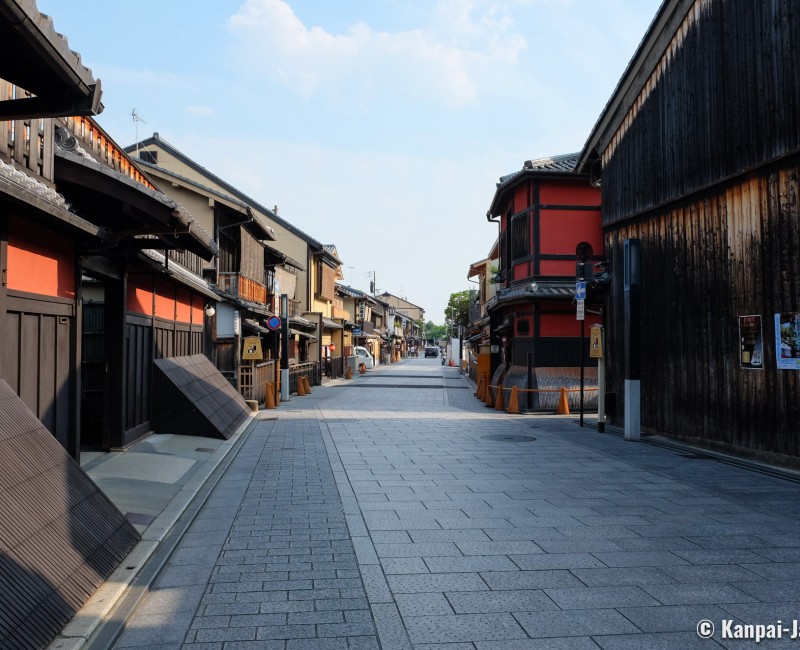
Kanpai’s impressions
These visits gave us a mixed feeling. If we were told 3 months ago that Kyoto and Nara will be deserted, we would not have believed it!
It is a really strange feeling to walk around empty touristic spots. It makes for a unique memory to share even after the crisis is over, and it is somehow a "lucky" experience to have once in a lifetime. Even during the SRAS epidemics in 2003 or the 2009 H1N1 Pandemic, the situation was not so dire: as a matter of fact, borders were not closed and Japanese people were still free to travel those places.
The positive aspect is the quietness, even if temporary, and the unexpected tranquility of a walk in sacred sites, that could have been spoilt by the crowd over the last years. As a consequence, taking picture has become very easy, and the sites retrieved their original beauty.
On the other hand, tourism industry is heavily impacted, and it is an economic disaster. Donations to temples are dropping, bankruptcies of shops and restaurants are expected to ensue. Specialized travel agencies suffer greatly as well.
The situation in Japan is really disturbing, with almost post-apocalyptic aspects, whereas the country was one of the less impacted by the virus. We even doubt the pictures we took, as they show unknown sceneries and cities that seem fake from emptiness.
When the Coronavirus 🦠 crisis is over, let’s remember there are many beautiful places in Japan, other than today's ghost-cities, sometimes off the beaten tracks, that we strive to introduce each week on Kanpai-Japan in our Sightseeing Guides.
How annoying Kyoto and Nara’s crowds of tourists may have been, they were at least proof that life was thriving.

